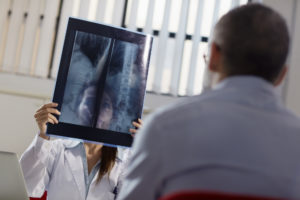by Evan Lerner

Hannah Zlotnick, a graduate student in the Department of Bioengineering and a member of the McKay Orthopaedic Research Laboratory in Penn’s Perelman School of Medicine, has been named a Schmidt Science Fellow.
She joins 28 early-career scientists from around the world in this year’s cohort, with each receiving support for one to two years, $100,000 in salary support per year, individualized mentoring, and a series of professional development sessions as they pivot to the next stages of their research agendas.
The fellowship is a program of Schmidt Futures, the philanthropic initiative of Eric and Wendy Schmidt that aims to tackle society’s toughest challenges by supporting interdisciplinary researchers at the start of their careers.
“Our latest group of Schmidt Science Fellows embodies our vision for this Program at its inception five years ago,” says Eric Schmidt, co-founder of Schmidt Futures and former CEO and Chairman of Google. “We find the most talented next-generation leaders from around the world and back these impressive young adults with the resources and networks they need to realize their full potential while addressing some of the big scientific questions facing the world. Congratulations to the 2022 Schmidt Science Fellows, I am excited to see where your science takes you and what you will achieve.”
Working at the intersection of materials science, biology, and applied clinical research, Zlotnick’s postdoctoral work will involve developing advanced bioprinting techniques for regenerative medicine. Such advances are necessary to recreate the multi-cellular composition of orthopedic tissues, such as those found in the knee joint. Lab-grown tissue models can then be used to broaden our understanding of how degenerative diseases progress after injury, limit the need for animal models, and serve as a platform for therapeutic discovery.
Read the full story in Penn Engineering Today.


